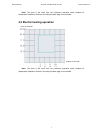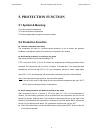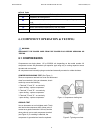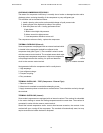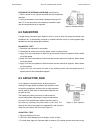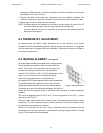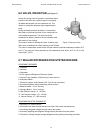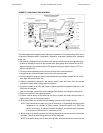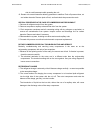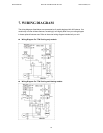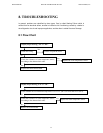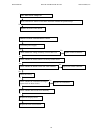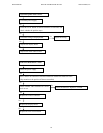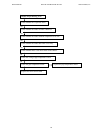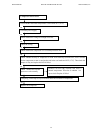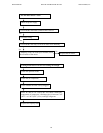side in small increments while operating the unit.
12. Restart unit several times after allowing pressures to stabilize. Pinch off process tubes, cut
and solder the ends. Remove pinch off tool, and leak check the process tube ends.
SPECIAL PROCEDURE IN THE CASE OF COMPRESSOR MOTOR BURNOUT
1. Recover all refrigerant and oil from the system.
2. Remove compressor, capillary tube and filter drier from the system.
3. Flush evaporator condenser and all connecting tubing with dry nitrogen or equivalent, to
remove all contamination from system. Inspect suction and discharge line for carbon
deposits. Remove and clean if necessary.
4. Reassemble the system, including new drier strainer and capillary tube.
5. Proceed with process as outlined under hermetic component replacement.
ROTARY COMPRESSOR SPECIAL TROUBLESHOOTING AND SERVICE
Basically, troubleshooting and servicing rotary compressors is the same as on the
reciprocating compressor with only a few exceptions.
1. Because of the spinning motion of the rotary, the mounts are critical. If vibration is present,
check the mounts carefully..
2. The electrical terminals on the rotary are in a different order than the reciprocating
compressors. The terminal markings are on the cover gasket. Use your wiring diagram to
insure correct connections.
REFRIGERANT CHARGE
1. The refrigerant charge is extremely critical. Measure charge carefully - as exact as possible
to the nameplate charge.
2. The correct method for charging the a rotary compressor is to introduce liquid refrigerant
into the high side of the system with the unit off. Then start compressor and enter the
balance of the charge, gas only, into the low side.
The introduction of liquid into the low side, without the use of a capillary tube, will cause
damage to the discharge valve of the rotary compressor.
Service Manual
Room Air Conditioner with R-410A
Heat Controller, Inc.
15



